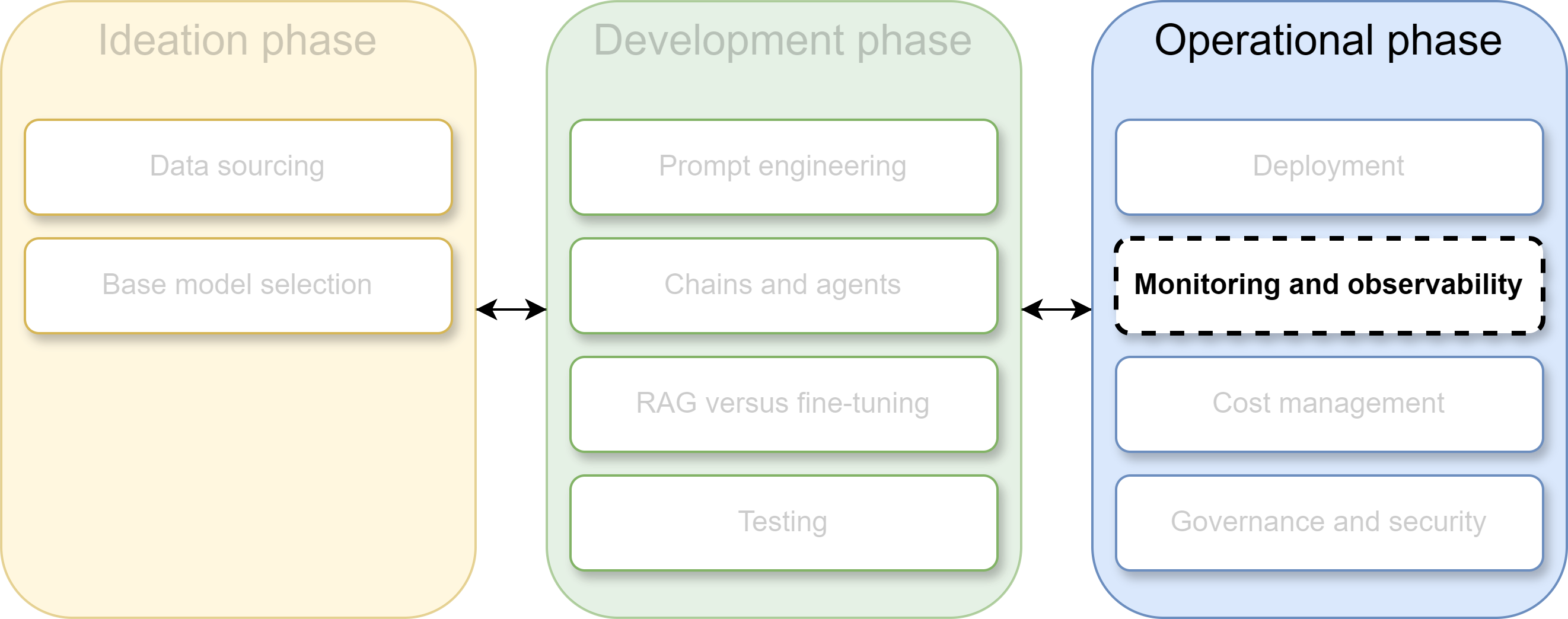Monitoring and observability
LLMOps Concepts

Max Knobbout, PhD
Applied Scientist, Uber
LLM lifecycle: Monitoring and observability

Monitoring and observability
![]()
- Monitoring continuously watches a system.
- Observability reveals internal states to external observers.
- Data sources for observability:
- Logs
- Metrics
- Traces
Input monitoring
- Monitor inputs for:
- Changes
- Errors
- Malicious content
- Data drift is the change in input data distribution over time
- Addressing data drift requires:
- Monitoring the data distribution
- Periodically updating the model

Functional monitoring
Examples:
- Response time
- Request volume
- Downtime
- Error rates
For LLM applications:
- Chain and agent execution
- System resources (GPU)
- Costs

Output monitoring
- Use metrics defined during testing, such as:
- Bias
- Toxicity
- Helpfulness
- Model drift:
- Relationship between input and output changes
- Censoring is about actively intervening

Alert handling
![]()
- Be notified when issues arise
- Have clear procedures
- Service-Level Agreements (SLAs) might be in place
Let's practice!
LLMOps Concepts

